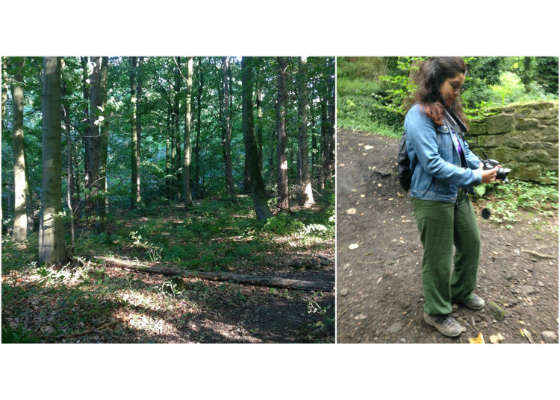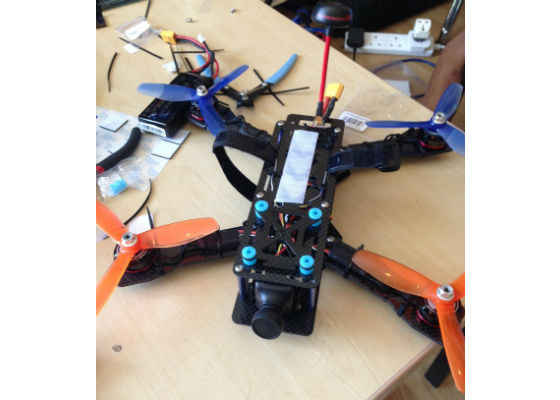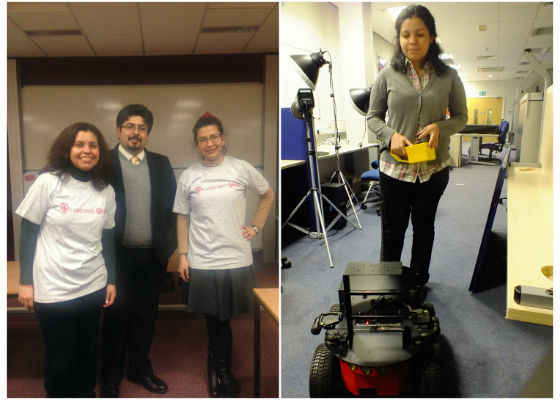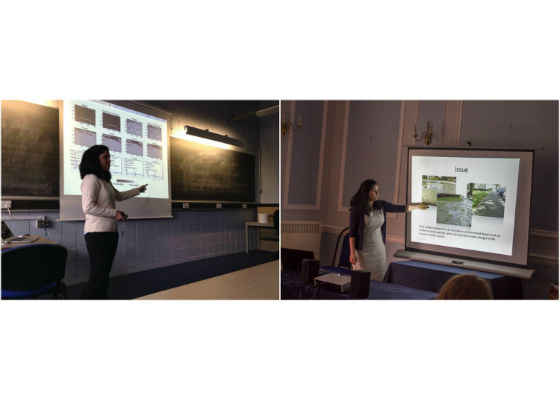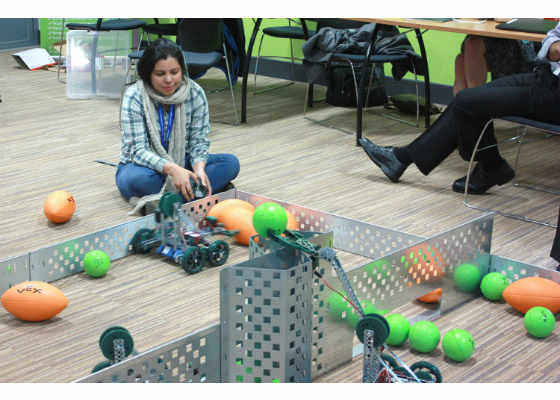AI Student Ambassador Bruna Pearson: Deep Learning, Robots, and Drones Oh My!
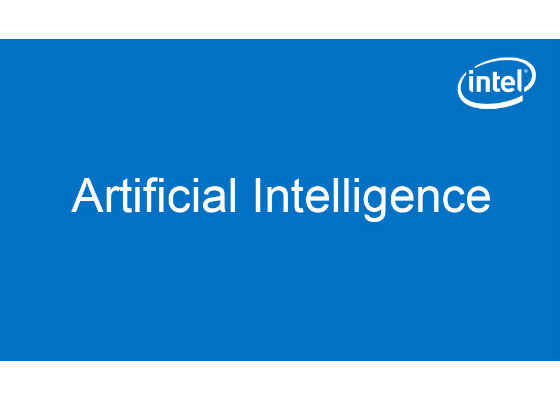
The Intel® Student Developer Program was created to work collaboratively with students at innovative schools and universities doing great work in the Machine Learning and Artificial Intelligence space. I had the opportunity to get to know Intel® Student Ambassador Bruna Pearson and learn about how she got interested in deep learning, robots, and drones.
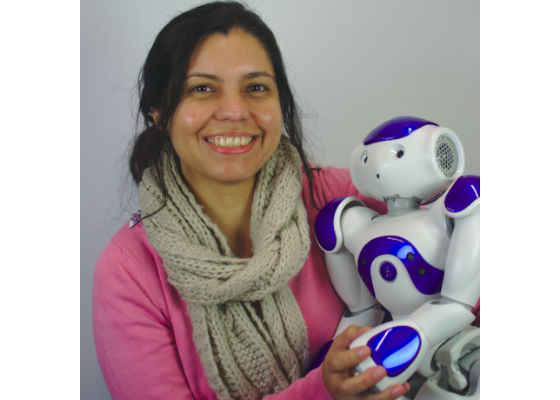
What got you started in technology?
I was born and grew up in Brazil. One day, my father brought home an outdated TK-85, which was a clone of Sinclairs' ZX81. Until that point I had never even seen a computer. It is fair to say that it was love at first sight! The books we had about programming were all in English, and so I used a dictionary to translate them to Portuguese, and soon learned how to code in BASIC. I’ve not stopped using computers since.
Robotics came much later, when I was at university in Durham, and a pair of Pioneer-3ATs was brought to our computer vision lab. I had played with Lego and Raspberry Pi powered robots before, but the P3-AT was different: it was a tool, rather than a toy, and it was then that it became clear that robotics was what I wanted to do.
Tell us about your background.
I completed my masters in computer science at Durham University, where I had the opportunity to investigate 3D scene mapping and navigation using multi collaborative robots. This was an extension of my third-year project, in which I investigated how to autonomously navigate in unstructured environments, both indoors and outdoors. In this project we applied visual saliency to the input image retrieved from a single camera. Using image segmentation we were able to distinguish between paths and non-paths, so that the robot could learn where it was safe to navigate and could make decisions about how far and how fast it could go.
Currently, I am reading a PhD, also at Durham, where I am funded by the Engineering and Physical Sciences Research Council (EPSRC). I am looking at how to fly autonomously in unstructured environments, such as under a forest canopy, while simultaneously producing a 3D image of the environment. This project involves the use of a low-cost Unmanned Aerial Vehicle (UAV) to autonomously retrieve imagery data, before performing a procedure called Structure from Motion (SfM) in order to produce a 3D map of the surveyed area.
What was the inspiration for you to get started with 3D mapping and navigation?
During my first summer internship, I started investigating saliency maps and how to apply them to pathway detection problems. In the beginning it was very painful because absolutely nothing was working. But slowly and with a lot of support from my colleagues, I started to get the hang of MATLAB and C++ and everything started to work. I really enjoyed that experience and I wanted to do more, so instead of doing my third year dissertation in Image Processing I asked to change to Computer Vision. This change allowed me to expand my research into Robotics and the exploration of both navigation and 3D mapping was suggested by my supervisor.
What projects are you working on now?
I am using Deep Learning to simulate humans' perceptions of forest trails with the intention of giving a UAV the ability to identify a trail and to make an autonomous decision about the best flight strategy to be executed in real time. The applications of this project vary from Search and Rescue (SaR) missions to assessments of forest structures and riverscapes and even to farming, where UAVs are being used to assist crop monitoring and to spot bacterial or fungal infections on trees, for example.
What Intel technologies are you currently using, or plan to use?
Currently I am investigating the use of the Intel® Movidius™ Neural Compute Stick to identify trails in unstructured environments. In addition to that my plan is to use Intel’s ready to fly drone to perform data gathering and test autonomous flights.
How are you planning to leverage Artificial Intelligence or Deep Learning technologies in your work?
I believe that in order for a UAV to be able to make similar decisions to those that a person would while navigating in unknown and unstructured environments, more is required than just freezing or adding extra layers into a DNN. I believe we need to re-think our approach to development and simplify the process of creating models. This is what I am currently working on.
What is a technology challenge you’ve had to overcome in a project?
In the current project, our main challenge is data gathering. We are interested in data that can provide enough information to aid generalization to different domain targets and also to allow more accurate obstacle avoidance behavior. In order to achieve this we need to train Deep Neural Networks, which by nature require a lot of data for classification. In addition, this data needs to be significantly varied and, to some extent, sequential. That leaves us with the option of gathering either synthetic or real-world data to train our model. Although gathering synthetic data from games or simulators seams at first a convenient option, it can result in models that don’t perform well in real-life scenarios. So, in reality we are trying to achieve the best level of accuracy possible using smaller samples of both real and synthetic data.
Tell us about your experience as a woman working in technology.
The women in my family have a saying: "a woman should be like a bamboo tree, because although a strong wind can bend it, it is still very hard to break it". This does not mean we have to be invincible or harsh, just that we should not give up easily. Adversities like the strong wind will always surround us, wherever we go. It is up to us to keep going.
I have met so many strong woman in technology that do just that – they keep going, like Dr. Sarah Drummond, who, like many other women, raised her children while doing her PhD. We have lots of other brilliant female PhD students that are doing just that and they inspire me every day, like Dr. Hannah Dee who created the Lovelace Colloquium because she thought it would be a good idea to have a space where girls could present their work and talk about technology. To be honest I think she had an amazing idea and the Colloquium has just celebrated 10 years of encouraging and supporting woman in technology. When I was an undergraduate I was encouraged to present my work at the Colloquium and am now one of its greatest fans.
The Colloquium has helped me to see how important is to encourage more girls to have a go at computing. Because of this, in 2015, I and other computer science (CS) students created a Facebook group called "Women in CS – Durham", which connects former CS students with fresher students. It is also a space where we share our achievements, job opportunities, additional support and training tailored for girls. We also want to show that you don't need to be a major in Computer Sciences to like technology, so together with Dr. Ibad Kureshi and others we support the Code First Girls initiative, where we work as volunteers aiming to introduce and train girls to code and build web applications. I also work as a Science, Technology, Engineering, and Math (STEM) ambassador to support schools delivering technology-related content, but above all to talk with boys and girls about what can be achieved if you just dare to try.
I think it is important to say that my personal experience as a woman in technology has been shaped not just by the amazing female models that I have had, but also by the support and encouragement that I have received from male colleagues, supervisors, lectures – and the list, I am happy to say, is not small. For that, I am thankful.
What are you looking forward to doing with Intel as part of the Student Ambassador program?
This is a very exciting opportunity for me. I am learning a lot and this is reflecting positively on my research. I have space to share my work and interact with other developers through the Intel® Developer Mesh community, not to mention access to additional servers where I can speed up and increase the amount of training and testing required to fine tune our Deep Neural Network. I am looking forward to sharing this opportunity with other students at Durham, because I am sure it will also have a positive impact on their academic development. I think is safe to say that good research tends to have a positive impact on society in general.
How can Intel help students like you succeed?
By somehow expanding the program to incorporate secondary school students that are learning about computing. In a few years, some of them will be at the University doing what I am doing now and if they already have a basic understanding of how artificial intelligence works, they will make better decisions about how to direct their education and research. I think starting to teach about AI early is key to getting more students into technology based studies. This could take place during one- or two-week summer camps where students could learn how to code and also develop AI-related projects with support from current student ambassadors, for example.
What impact on the world do you see AI having? And do you see yourself as part of it?
I think one of the great things about AI is that it will improve the quality of life of those who need it most. Take, for example, the driverless car: it won’t just reduce road accidents or take us from A to B; better than that, it will connect people who now find difficult to take public transport or to do simple things like shopping or visiting friends and family. There will be no waiting for taxis, trains or buses. I think that in the future most of us won’t feel the need for a car either; it will be more practical to have a monthly subscription that allows us to choose which car we want at our door when we need it. We could have intelligent cars that identify the level of stress of the passenger and automatically adjust light and sound conditions to recreate a more relaxing environment while driving back home. My hope is to be amongst the ones that will be driving this technology forward.
What trends do you see happening in technology in the near future?
I think we won’t be using so many handheld devices like tablets, mobile phones or smart watches in the future. Instead, our smart sunglasses/contact lenses will display all the health related information that is gathered by our smart clothes while we are exercising.
Similarly, calls, emails and even our favorite TV shows will be displayed on the go. Food waste will be reduced since our smart kitchens will be buying the groceries for us and no need to wait for the delivery service either; our autonomous car will pick up the shopping before picking us up from work. If robots are cooking our dinner, there is no need for fast food or take way food either, so we should eat healthily as well.
Personal computers will be unnecessary; we will be working from customized working stations placed at public places. It will make sense to have a practical life where creativity is highly prized and I think it is much easier for someone to have an eureka moment when they are having a coffee at a lovely and cozy coffee shop or on a bench by the sea, than it is when they are in a closed cubical because they need to power up their laptop to type notes.
Outside of technology, what type of hobbies do you enjoy?
Durham is a fantastic place for outdoor activities. It is part of the local culture and I really love it, so I usually alternate between hobbies depending on the weather. I enjoy hiking and swimming during spring and summer, but during autumn and winter I prefer archery or going for long walks. Independent of the season I enjoy reading, cooking and cycling. I am also slowly expanding into photography and have been enjoying gardening lately too.
For more such intel IoT resources and tools from Intel, please visit the Intel® Developer Zone
Source:https://software.intel.com/en-us/blogs/2017/10/26/ai-student-ambassador-bruna-pearson-deep-learning-robots-and-drones-oh-my


